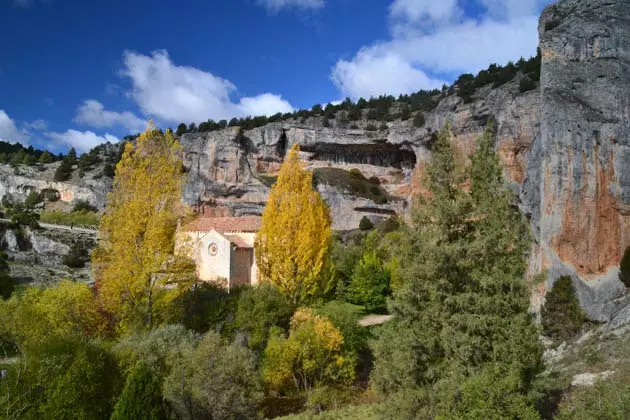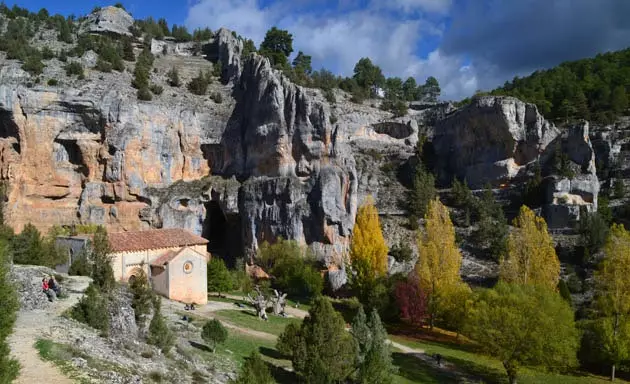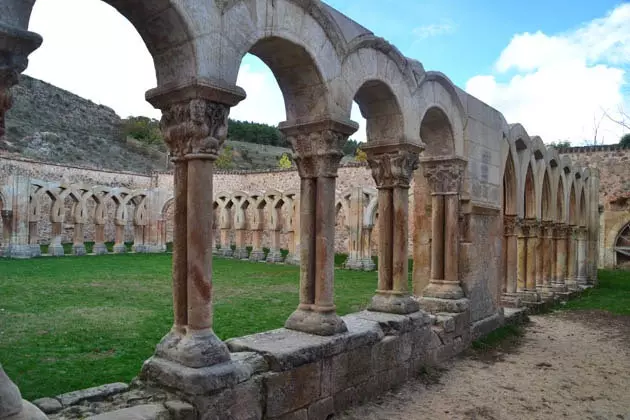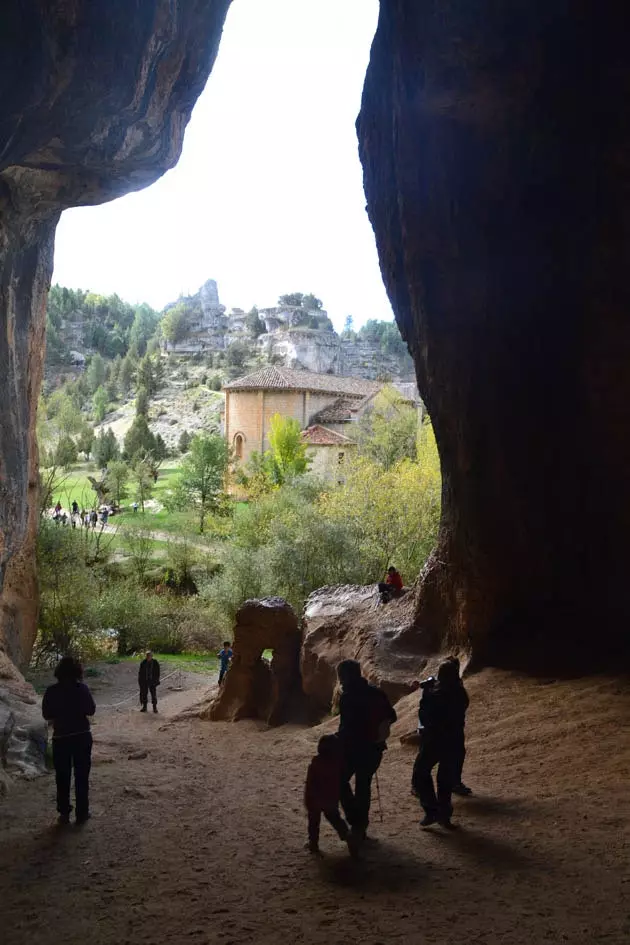
Hermitage of San Bartolomé, canyon of the Lobos River
Making a summary a bit frivolous and simple, the Knights Templar set up the first multinational hotel company . Their business was round: they protected pilgrims from the West to the Holy Land and gave them shelter (in exchange for money) in hostels and monasteries scattered throughout the Christian world at the time. The choice of places was not casual, they were normally located in spaces with positive energies that helped the rest and recovery of the suffering Christians . It is true that other military activities in the surroundings of Jerusalem derived from this proto-tourism business, conquering and reconquering the promised homeland until the defeat in the last battle in Arward marked its end.
But let's get to the point, the Templars left a very powerful legacy in the Spanish heritage, in addition to legends and very particular constructions in very special corners that have only fed different theories. The secrecy of this order has made it easier for historians to have millions of currents in their minds that try to bring light and coherence to their complex work, often giving it greater importance and symbolism than it really has. being practical, there are two points in Soria in which it is not necessary to believe or get carried away by stories for adults. All you need is a pendulum, a good hand and a little wonder, which often helps to enjoy this type of trip more.
Hermitage of San Bartolomé, Lobos river canyon This enclave has it all. The natural wonder point of a Natural Park gentleman, with a calm river, pine-skyscrapers, capricious karstic formations and water lilies in the small pools. Yes, Monet would have put on his boots here . then there's that Big Cave that fixes the photo and that enlarges the myth of this corner as a mecca for hermits. And for the Templars, so many ingredients did not go unnoticed. In its most spectacular bend they built a hermitage dedicated to San Bartolomé, an apostle who was martyred by skinning him. No, the name is not a coincidence, too many similarities between the change of skin and the spiritual retreat.

Hermitage of San Bartolomé, first stop with the pendulum in hand
But these gentlemen were not easy to impress, such an idyllic image was not enough. There are more disturbing facts about these coordinates. For example, It is equidistant from Caps de Creus and Caps Finisterre, the traditionally eastern and western points of the Peninsula. (It should be noted that it has now been discovered that Cape Touriñán is further west than Finisterre). It seems easy to measure this data today, with GPS, Google Maps and other modernities, but this only goes to show the incredible mastery of astronomy and geometry of the Templars.
The hermitage happens to be rough, cold but harmonious with the landscape . The really different thing is to walk it barefoot and feel a tingling in the soles of the feet. Given the place where you are and the religious environment, this sensation could be described as a psychosomatic act, but it is not. And there is the pendulum to prove it, appeasing his dance already from the outside, where he crosses between the two dry olive trees until he enters through the side door. The interior, without being anything from the other world, has a place that accentuates this halo of mystery and applied mathematics. It is a slab that stands out for having a cross in relief of a kicked cross that is illuminated by the sun's rays only on the winter solstice . Almost nothing.
San Juan de Duero, Soria A priori, this place is not like the best place to lay down your backpack and take a nap. Being next to the Duero for a long time biruji from which the rough stones are infected. This monastery was long abandoned by the hand of God, feeding a little the legends of the mount of the Souls , which is behind him. Its dilapidated and ghostly look continues to amaze today, but above all, it is impressive for all its rarities, from inside to outside, which over time and restorations have made it the most visited monument in all of Castilla y León.

San Juan de Duero, Soria
Let's start with the oddities inside. The fact of having been outside the city, far from the architectural remodeling and changes in construction patterns, allows us to see what the old churches were like in Spain, which was governed by the Mozarabic rite, the mass_-style_ that was most liked in this order . That is why it has two altars, because each part of the Eucharist was celebrated on a different table, under capitals with very different themes and that today are well preserved. In addition, its apse is very, very deep, since the priests went as far as possible from the common people to give sermons. That's why the acoustics work perfectly if the visitor advances to the end. You can't tell secrets here, the whole church would find out.
Just seeing what the walls of the church keep would serve to return satisfied, but on the outside is the true mystery, the magnet of this trip . Only the cloister remains, but what a cloister! It is quite an exhibition of rare arches, styles that do not fit anything with old Castile and that show the oriental influences of their builders. Shapes of 8, arabesques... thus an endless number of different types spread over the four sides, what makes it a museum of medieval architecture . But an arch powerfully draws attention. The column is missing, as if time or some thief who spent the night in its ruins had taken it away. But no, it is too perfect, as if it had dislocated with millimeter precision demonstrating that only one theory is valid: it was built like this.
It is time for the pendulum, to check what is suspected . By approaching and trying to become part of the disappeared pillar, the visitor feels how the pendulum movement changes orientation and strength until it stops, attracted by an unusual gravity. Incredible but true. Of course, do not try to do it at home, lest you discover that the Templars lived, one day, on the same foundations.

The Cueva Grande makes Soria the "mecca" of hermits
